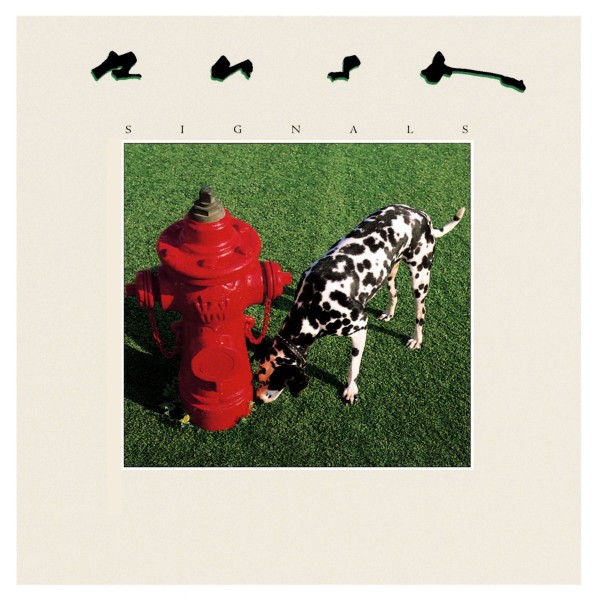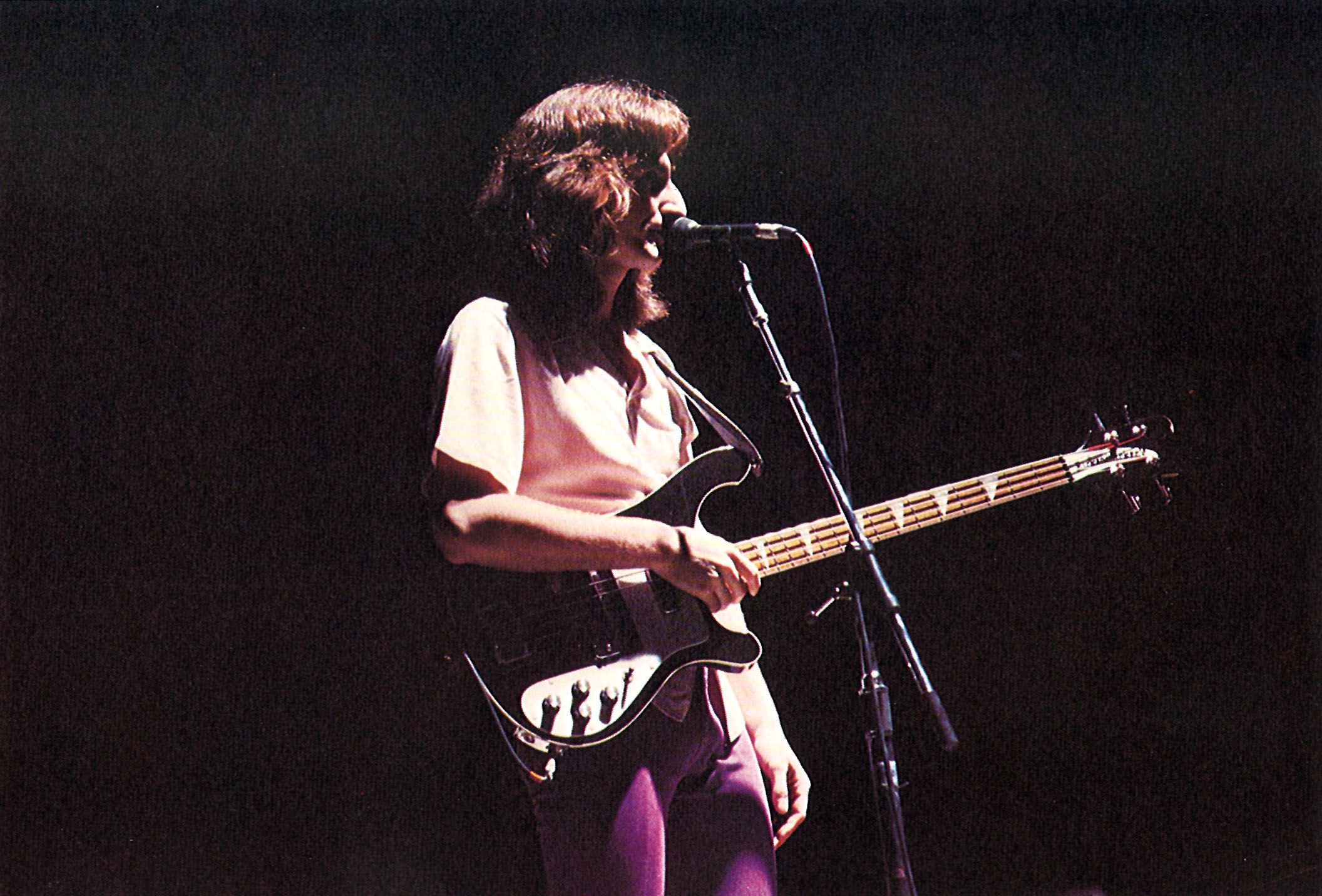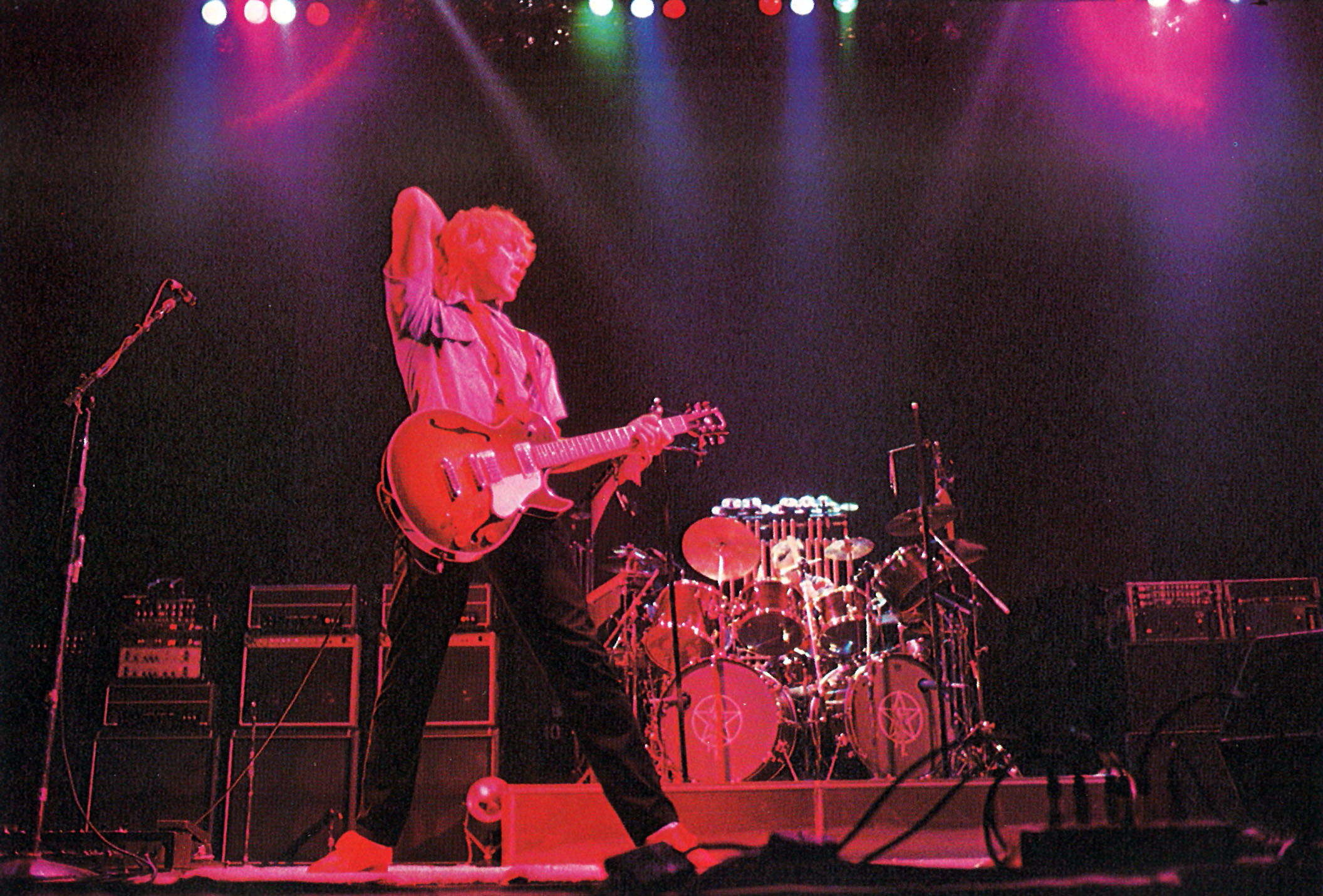
A Sleek New Form
 Rush were now in the unenviable position of having to capitalize the mammoth success that was “Moving Pictures”. Whatever direction the band was going to explore, inevitably fans were going to compare it to “Moving Pictures”, whether they liked it or not. Luckily, the band did not fall into the trap of resting on their laurels and in 1982, “Signals” was released. This record marks the beginning of a new era of the band, one in which the trio heavily implemented synthesizers into their music, an era that fans have dubbed the "Synth Era". Now synthesizers were an already established ingredient of Rush's music, since the late seventies in fact, but this is the release where the synths started to become a more dominant part of the song making process. “Signals” is a very bold, daring record in many respects helping to push the band's sound further, luckily not resting on the success of their previous output.
Rush were now in the unenviable position of having to capitalize the mammoth success that was “Moving Pictures”. Whatever direction the band was going to explore, inevitably fans were going to compare it to “Moving Pictures”, whether they liked it or not. Luckily, the band did not fall into the trap of resting on their laurels and in 1982, “Signals” was released. This record marks the beginning of a new era of the band, one in which the trio heavily implemented synthesizers into their music, an era that fans have dubbed the "Synth Era". Now synthesizers were an already established ingredient of Rush's music, since the late seventies in fact, but this is the release where the synths started to become a more dominant part of the song making process. “Signals” is a very bold, daring record in many respects helping to push the band's sound further, luckily not resting on the success of their previous output.
 The record opens with a from their catalog, “Subdivisions”. Exploring the emotional and even physical barriers of isolation that middle class society erects. Wonderfully melancholic, Peart's writing helps convey how all encompassing these barriers truly are. Isolation virtually follows people everywhere they go, "In the high school halls...In the shopping malls...In the basement bars...[even] in the backs of cars." This down to earth message is made all the more impactful with the implementation of synthesizers. While some fans of the band's earlier records may take grievance with this creative decision, one cannot deny at least how expertly implement the synthesizers are on this song. The swirling feeling that is elicited by the keyboards helps drive the emotional weight further, while luckily not coming off as overbearing. As previously iterated, a classic song of their output.
The record opens with a from their catalog, “Subdivisions”. Exploring the emotional and even physical barriers of isolation that middle class society erects. Wonderfully melancholic, Peart's writing helps convey how all encompassing these barriers truly are. Isolation virtually follows people everywhere they go, "In the high school halls...In the shopping malls...In the basement bars...[even] in the backs of cars." This down to earth message is made all the more impactful with the implementation of synthesizers. While some fans of the band's earlier records may take grievance with this creative decision, one cannot deny at least how expertly implement the synthesizers are on this song. The swirling feeling that is elicited by the keyboards helps drive the emotional weight further, while luckily not coming off as overbearing. As previously iterated, a classic song of their output.emphasis on Alex's guitar as the leading instrument. This track harkens back to the sound of the previous couple of records, with a heavy emphasis on a Police-style reggae sound.
Similarly, “Digital Man” follows that direction as well, but to a much greater, lyrically heavier
effect. “Digital Man” expresses how fast people can be when advancing with current
technology, which serves as a nice contrast with "Analog Kid" which was sort of a nostalgic look at the technology of old and the memories that it elicited. While those two songs offer fairly balance, somewhat positive portrayal of emerging technology, not all of the record has this optimistic outlook on the world.
This warning of technology is explored in the second part of “Fear” series “, “The Weapon”. Opening the second side of the album this track exhibits heavy allusions to the Cold War scare that was happening around this point in the eighties. While coming as up beat with a lively drum pattern and bright keyboards, lyrics such as “With an iron fist in a velvet glove, We are sheltered under the gun”, give a very different picture. This is one where there is an ever present threat of attack by the enemy, and the fear is almost overbearing. People's morales start to go away with this fear, going against their code that they claim to have a strong belief in. Very similar in lyrical approach to the previous song of the "Fear" series, "Witch Hunt", with this sense of paranoia.

The biggest highlight on the record has to go to the second to last track “Losing It”. A truly melancholic piece, it details the pain at which old age grips people. Neil Peart's writing elicits all the pain that these people goes through, how their lungs are on fire, to the way they limp along the floor, it's truly one of the most heartbreaking songs that Rush ever composed. What truly sells the track on its power is a spell bending electronic violin performance by Ben Mink, giving it all the pain that this track deserves. Rumor has it that this track is apparently an allusion to Ernest Hemingway and how he left in his later life, though that’s again a rumor. Given Peart's interest in literature though, that rumor isn't entirely unfounded.
 Not all the tracks on “Signals” are morose or cynical. Tracks such as “New World Man” and serve to highlight the passion and drive many people have to make the world a better place, and "Chemistry" details scientific process that goes into how the brain functions when eliciting emotions. The final track “Countdown” is an astronomical powerhouse, brilliantly conveying a rocket ship launching into the stars. It highlights the leaps and bounds that human ingenuity has achieved, with the keyboards helping to give this sense of grandeur and weight to this moment. The track builds and builds until near the end it really takes flight, and it feels like now a new journey has begun, one that will go on to greener pastures in a way.
Not all the tracks on “Signals” are morose or cynical. Tracks such as “New World Man” and serve to highlight the passion and drive many people have to make the world a better place, and "Chemistry" details scientific process that goes into how the brain functions when eliciting emotions. The final track “Countdown” is an astronomical powerhouse, brilliantly conveying a rocket ship launching into the stars. It highlights the leaps and bounds that human ingenuity has achieved, with the keyboards helping to give this sense of grandeur and weight to this moment. The track builds and builds until near the end it really takes flight, and it feels like now a new journey has begun, one that will go on to greener pastures in a way.  For all the records strengths, one of the biggest weakness is that it's caught in between two musical directions. One one end, tracks such as "Countdown", "Subdivisions", "Losing It" show the band moving forward into this synth direction and advancing their sound, truly showing off the new capabilities that the band now was using at their disposal. On the other hand you have songs such as "Analog Kid", "New World Man" and others that while decent in their own right, in retrospect are tracks that show the band retreading ground they had already established on their last two records, to much weaker results. The band isn't fully committing to one direction and in the end "Signals" is a record that shows the band at a cross roads. The tracks that do show the band progressing, though, outweigh those kinds of tracks, and in the end "Signals" is a bold step in a new and exciting direction for Rush, a record that showed that the band wouldn't give in to pressure and make another "Moving Pictures".
For all the records strengths, one of the biggest weakness is that it's caught in between two musical directions. One one end, tracks such as "Countdown", "Subdivisions", "Losing It" show the band moving forward into this synth direction and advancing their sound, truly showing off the new capabilities that the band now was using at their disposal. On the other hand you have songs such as "Analog Kid", "New World Man" and others that while decent in their own right, in retrospect are tracks that show the band retreading ground they had already established on their last two records, to much weaker results. The band isn't fully committing to one direction and in the end "Signals" is a record that shows the band at a cross roads. The tracks that do show the band progressing, though, outweigh those kinds of tracks, and in the end "Signals" is a bold step in a new and exciting direction for Rush, a record that showed that the band wouldn't give in to pressure and make another "Moving Pictures". While not doing as well commercially as their previous record, "Signals" was another success and showed that the band was going to be moving into a direction that was different from their previous material. In 1984, the band would dive further into this synth-ladened direction, and in the process create their darkest record up to this point in their career.

Comments
Post a Comment